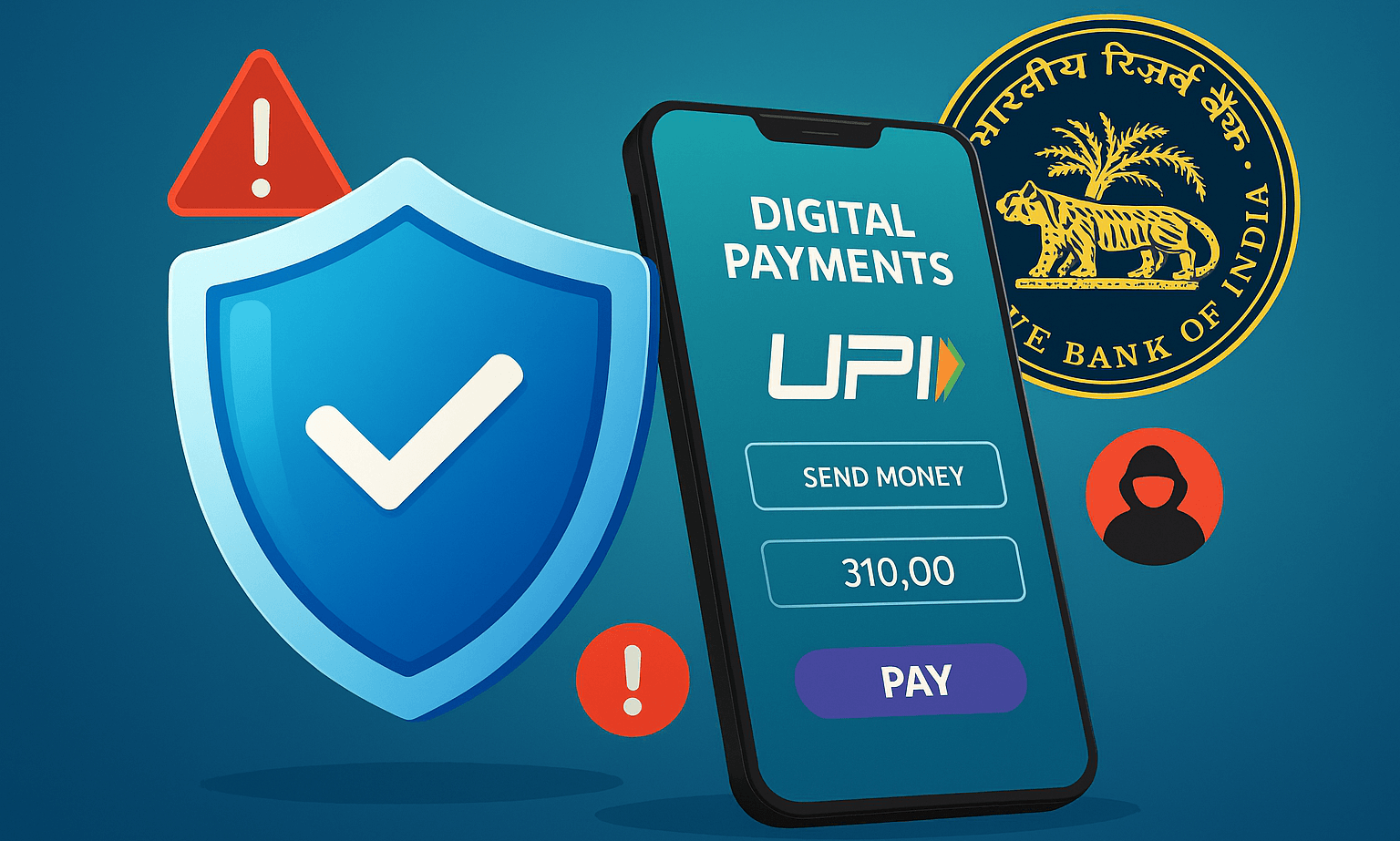RBI Addresses Rising Digital Payment Frauds: Strengthening Trust in India's Fintech Ecosystem

India’s digital payments landscape has undergone a dramatic transformation in the past decade, driven by innovations like UPI, QR code-based payments, and mobile wallets. However, with this rapid digitization, the frequency and sophistication of digital payment frauds have also surged. Recognizing the growing threat, the Reserve Bank of India (RBI) has stepped in with a series of regulatory, technological, and awareness measures to fortify consumer trust and safeguard the financial system.
The Growing Menace: Why RBI Had to Intervene
With India registering over 13,000 crore digital transactions in FY24, the country has emerged as a global leader in digital payments. But this growth has attracted cybercriminals who exploit vulnerabilities in systems and user behavior.
Common Fraud Types:
- Phishing and Smishing – Fake emails or SMS messages to trick users into revealing sensitive data.
- Social Engineering – Impersonation of bank officials or app support staff.
- Remote Access Apps – Fraudsters persuade users to download apps that allow full access to their devices.
- Fake UPI Handles – Fraudulent merchant accounts mimicking genuine platforms.
According to recent RBI data, frauds related to digital payments have seen a double-digit rise, particularly in tier-2 and tier-3 cities, where digital literacy remains limited.
RBI’s Multi-Pronged Strategy to Curb Frauds
- Digital Payment Security Controls Directive
RBI has issued detailed guidelines to banks and payment service providers (PSPs), mandating:
-
- Real-time fraud monitoring systems
- Risk-based transaction authentication (like behavioral biometrics and geolocation tracking)
- AI/ML-based anomaly detection tools
- Helpline 1930 & National Cybercrime Reporting Portal
-
- RBI, along with the Ministry of Home Affairs, promotes the use of 1930, a 24x7 helpline for reporting payment frauds.
- Victims can also report incidents on the cybercrime.gov.in portal for faster redressal.
- Tokenization & Card-on-File Restrictions
To prevent card data theft, RBI has mandated:
-
- Tokenization – replacing actual card details with encrypted tokens
- Disallowing merchants from storing sensitive card details after transactions
- Account Aggregator Framework
While not directly related to fraud prevention, the Account Aggregator model introduces user-controlled data sharing, reducing reliance on insecure document exchanges and lowering the risk of identity fraud.
- Mandatory Customer Awareness Campaigns
RBI now requires financial institutions to:
-
- Regularly send educational alerts via SMS, WhatsApp, and emails
- Conduct digital fraud awareness sessions and cyber hygiene workshops, especially in semi-urban and rural areas
New Initiatives in 2025: RBI Doubles Down
In April 2025, the RBI unveiled additional steps:
- Establishment of Digital Payment Fraud Risk Advisory Group (DPFRAG)
- A cross-functional panel comprising cybersecurity experts, bankers, fintech leaders, and law enforcement
- Focus: proactive risk identification, industry coordination, and fraud intelligence sharing
- Real-Time Transaction Reversal Framework (Pilot Phase)
- RBI is working with select banks to reverse fraudulent transactions instantly once flagged via 1930 or the bank’s app
- Aims to reduce customer losses and improve trust in digital payments
- Public-Private Collaboration
- RBI encourages collaborations with cybersecurity startups for threat intelligence, fraud detection algorithms, and secure authentication layers
What It Means for Stakeholders
|
Stakeholder |
Impact |
|
Consumers |
Greater awareness, easier fraud reporting, enhanced protection |
|
Banks & PSPs |
Higher compliance burden, but also reputational advantage |
|
Fintechs |
Opportunity to innovate on fraud prevention tools |
|
Regulators |
Need for continuous monitoring and regulatory agility |
What You Can Do as a User
- Never share OTPs or PINs with anyone, even if they claim to be from your bank
- Avoid downloading screen-sharing apps like AnyDesk or TeamViewer for banking help
- Use official apps and secure websites
- Immediately report suspicious activity to 1930 or cybercrime.gov.in
- Enable multi-factor authentication (MFA) where possible
Conclusion
RBI’s firm stance on curbing digital payment frauds reflects its commitment to fostering a secure and trustworthy digital finance ecosystem. As digital payments continue to grow, ensuring robust protection mechanisms, user education, and industry collaboration will be key to defending against fraud and sustaining India’s fintech momentum.
India’s journey to a cashless economy hinges not just on innovation but also on confidence. RBI’s proactive measures are a crucial step toward maintaining that balance.
Recent post
Take Fintegriti for a Test Drive
No License Required!
Still on the fence? Hop in and experience payments so smooth,
even your morning coffee will be jealous



